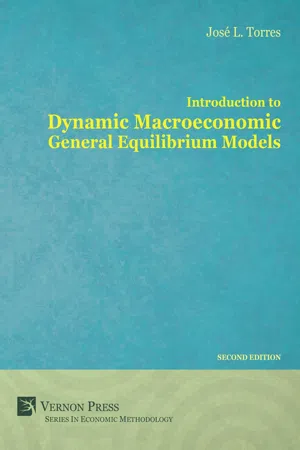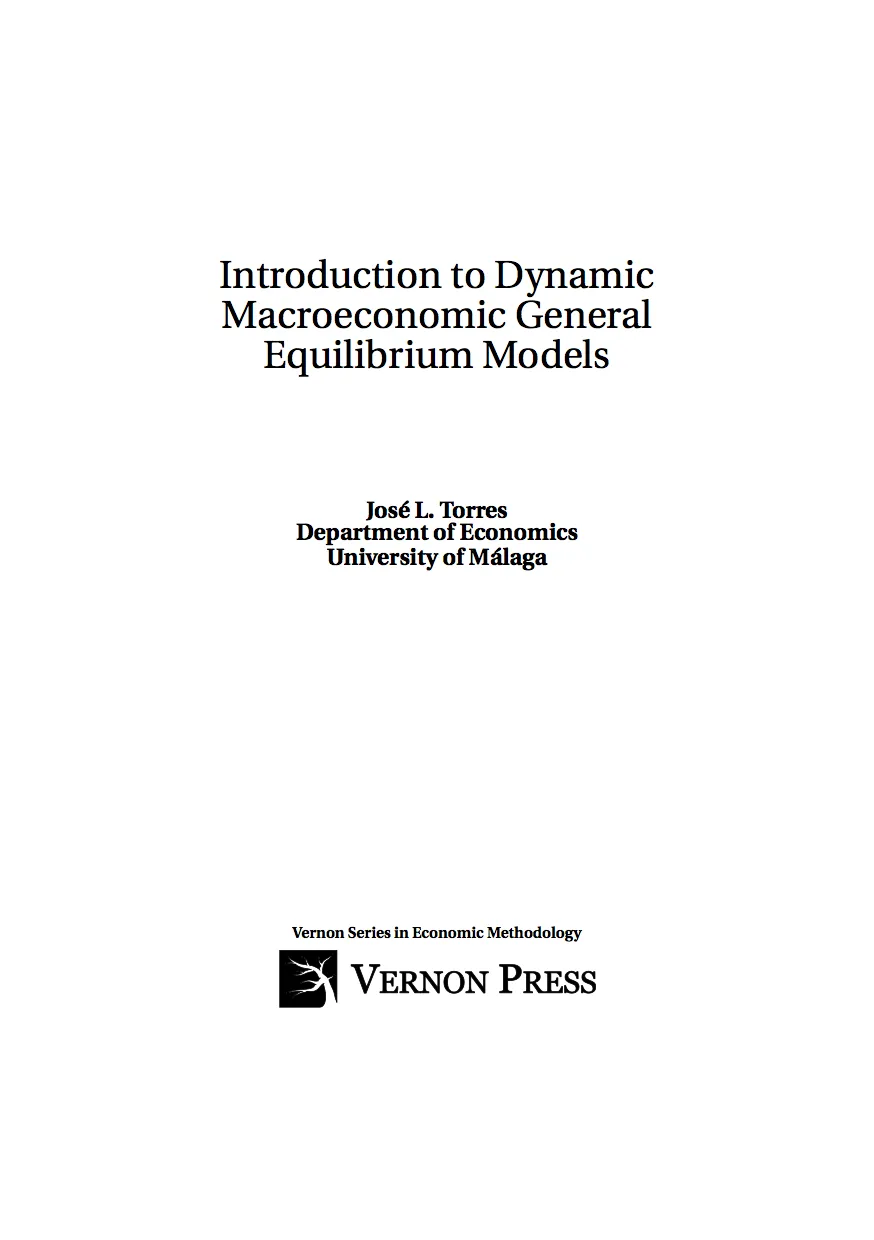
Introduction to Dynamic Macroeconomic General Equilibrium Models
- English
- ePUB (mobile friendly)
- Available on iOS & Android
Introduction to Dynamic Macroeconomic General Equilibrium Models
About this book
This book offers an introductory step-by-step course in Dynamic Stochastic General Equilibrium (DSGE) modelling. Modern macroeconomic analysis is increasingly concerned with the construction, calibration and/or estimation and simulation of DSGE models. The book is intended for graduate students as an introductory course to DSGE modelling and for those economists who would like a hands-on approach to learning the basics of modern dynamic macroeconomic modelling. The book starts with the simplest canonical neoclassical DSGE model and then gradually extends the basic framework incorporating a variety of additional features, such as consumption habit formation, investment adjustment cost, investment-specific technological change, taxes, public capital, household production, non-ricardian agents, monopolistic competition, etc. The book includes Dynare codes for the models developed that can be downloaded from the book’s homepage.
The second edition is identical to the first with the exception of a revised appendix to Chapter 2. The revised appendix can be downloaded free of charge in the accompanying downloads section.
Frequently asked questions
- Essential is ideal for learners and professionals who enjoy exploring a wide range of subjects. Access the Essential Library with 800,000+ trusted titles and best-sellers across business, personal growth, and the humanities. Includes unlimited reading time and Standard Read Aloud voice.
- Complete: Perfect for advanced learners and researchers needing full, unrestricted access. Unlock 1.4M+ books across hundreds of subjects, including academic and specialized titles. The Complete Plan also includes advanced features like Premium Read Aloud and Research Assistant.
Please note we cannot support devices running on iOS 13 and Android 7 or earlier. Learn more about using the app.
Information


Copyright © 2016 (Second Edition) by Vernon Press on behalf of the author.
| In the Americas: | In the rest of the world: |
| Vernon Press | Vernon Press |
| 1000 N West Street, | C/Sancti Espiritu 17, |
| Suite 1200, Wilmington, | Malaga, 29006 |
| Delaware 19801 United States | Spain |
Part I
Introduction to DSGE modelling
l. 211Part II
Deviations from the Permanent Income-Life Cycle hypothesis
l. 3394Part III
Investment and Capital Accumulation
l. 4998Part IV
The government
l. 6476Part V
Time Decisions
l. 9258Part VI
Imperfect competition
l. 10687Chapter 12
Monopolistic Competition
12.1 Introduction
l. 10692Table of contents
- I Introduction to DSGE modelling
- II Deviations from the Permanent Income-Life Cycle hypothesis